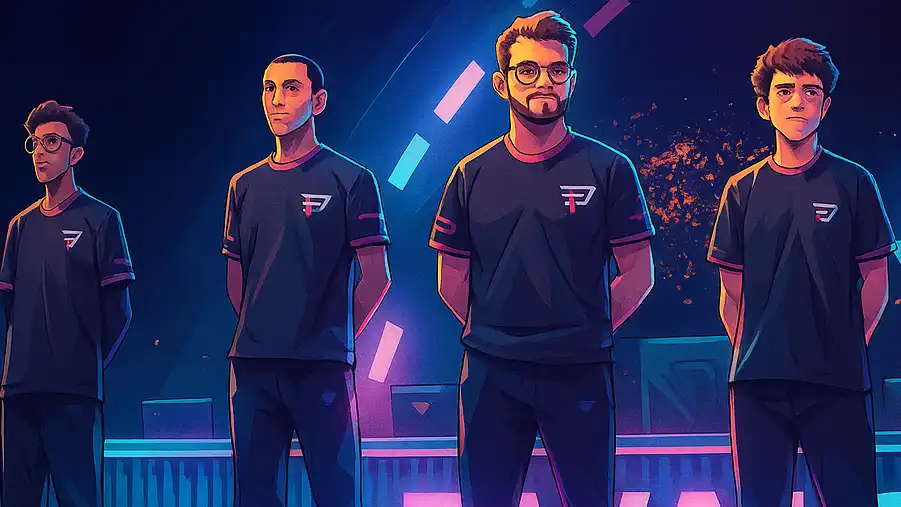BESTIA add buda: South American side look to shake up roster ahead of Major push

BESTIA add buda: South American side look to shake up roster ahead of Major push
On November 13 2025, BESTIA announced the addition of Argentinian rifler Nicolás “Kramer” Kramer — better known by his alias buda — to their active roster, replacing fellow Latin American player Luciano “luchov” Herrera.
A swift roster move
This move stems from Luciano “luchov”’s departure: multiple reports confirmed he is in the process of transferring to 9z Team, with his last appearance for BESTIA dating to late October. The club confirmed the signing of buda, a former 9z member, who had most recently featured for KRÜ after leaving 9z in April 2025.
Who is buda?
At just 22 years old, buda is a promising talent from Argentina. According to his player profile, he has built a reputation in South America’s competitive circuits — most recently averaging a 1.17 rating in domestic competition with KRÜ. Before KRÜ, he played for 9z between 2022 and 2024.
From a statistical standpoint, his full career numbers don’t yet match the more experienced players in the region, but his youth and recent upward trajectory make him an interesting pick for BESTIA, who are aiming to accelerate their progression.
What this means for BESTIA
BESTIA’s move to add buda is part of a larger ambition: the team wants to make a stronger impact after missing out on the StarLadder Budapest Major 2025. The announcement explicitly references this context, pointing out that the organisation “will be hoping the addition of buda can bolster their squad after a season that saw them miss out on [the Major].”
By integrating a younger, high-potential player, BESTIA are aiming to balance their roster between experienced manpower and fresh energy. According to their team profile, the current lineup now reads:
-
Nicolás “Noktse” Dávila (Arg)
-
Cássio “cass1n” Santos (Bra)
-
Tomas “tomaszin” Corna (Arg)
-
Cristhian “timo” Perez (Uru)
-
Nicolás “buda” Kramer (Arg) — new addition
Coach: Julián “Zote” Acosta (Arg)
Strategic and regional implications
-
Regional strength: South America has grown significantly as a CS2 region; teams like FURIA, paiN and Imperial have shown that Brazilian and broader Latin American squads can compete on the global stage. By adding buda, BESTIA aim to elevate their regional ranking and open the door to more LAN invitations.
-
Major qualification push: Missing the Budapest Major was a setback. A roster change indicates urgency – the new core must perform in upcoming qualifiers and LAN events to secure invitations and ranking boosts.
-
Roster dynamics: Replacing luchov with buda changes both experience and play-style balance. BESTIA will look to integrate buda quickly, establish his role clearly within team strategies, and ensure that synergy does not lapse.
-
Future potential: At 22, buda has years ahead of him. If BESTIA support his development effectively, the signing could pay off long-term. For now, it’s as much about potential as performance.
Risks and watch-points
-
Adaptation time: New joiners often take time to adjust. If BESTIA rush into high-stakes events expecting immediate results, they may come up short.
-
Expectation management: The addition of a “high-potential” player can raise expectations internally and externally. BESTIA must remain realistic about short-term performance.
-
Competition depth in SA: The South American region’s competition is fierce. Teams are constantly evolving; a lineup change does not guarantee an instant leap in performance.
Final thoughts
The signing of Nicolás “buda” Kramer by BESTIA is more than a simple roster swap — it signals an intent. BESTIA are proactively addressing limitations from previous seasons and landing a young talent with regional momentum. For buda, it’s an opportunity to step into a starting role and contribute to an organisation aiming upward. The real test begins now, as how quickly the team gel, how the new lineup performs and whether they can translate this move into qualification success will define the value of this transaction.
For South American CS2 fans and the broader esports community, this is a development worth noting — not just for the player or the team, but for the evolving ecosystem of Latin American Counter-Strike.



